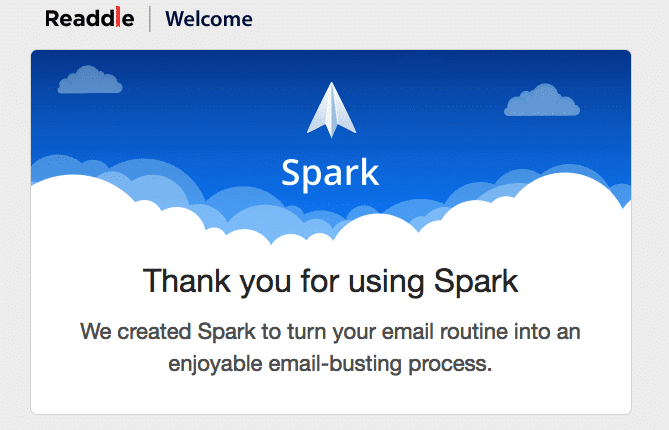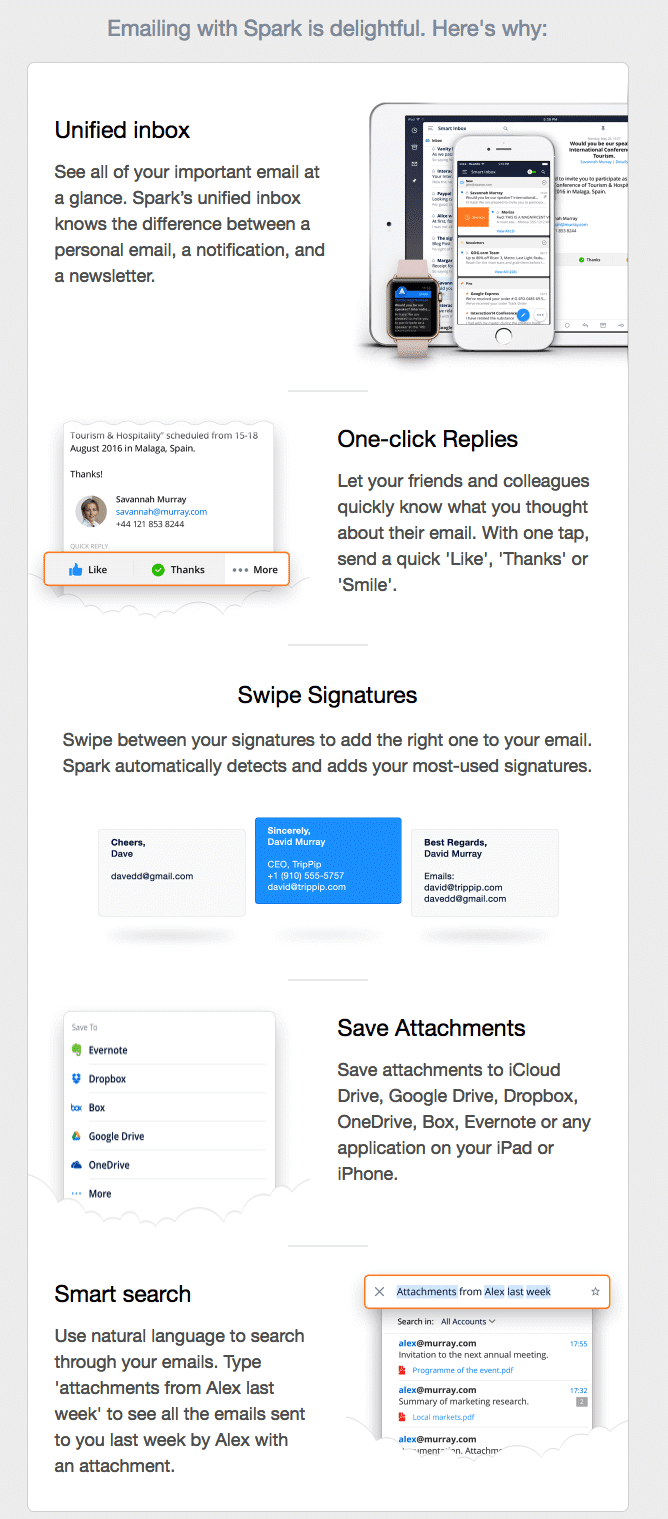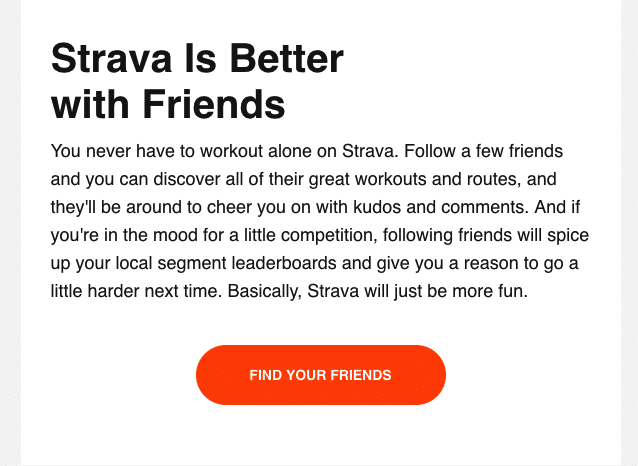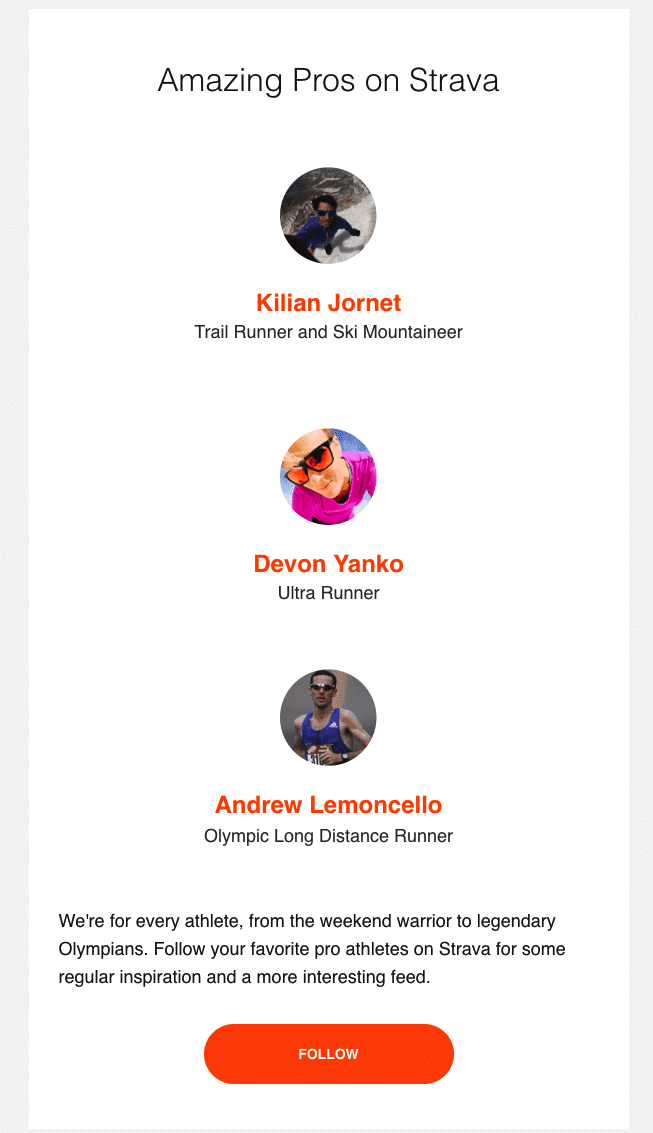In 2017, content marketing and email marketing are two tactics most online businesses use to acquire customers.
On the one hand, a survey carried by Content Marketing Institute showed that 88% of companies use content marketing as an acquisition tactic. The reason for this high adoption is simple: marketers who use their blog to promote their businesses are 13 times more likely to realize a positive ROI.
On the other hand, email marketing is used by 82% of B2B and B2C companies. Just like with content marketing, companies use email marketing because, for every $1 spent, email delivers an ROI of 4400%, the highest among all acquisition tactics.
If content and email marketing are so effective and popular, why do only 67% of B2C companies and 53% of marketers say email and content marketing, respectively, are effective?
If both tactics work, why don’t more companies find them successful?
A big reason has to do with one simple fact: they don’t tie both tactics together.
This means they create content separated from their email marketing strategy. Once they create content, they blast it through their email list hoping to get results.
This isn’t a smart way of doing business.
You see, understanding the relationship between email marketing and content marketing is the key to a successful business.
In this post, we’ll show you how to use email marketing and content to create customer journeys that convert like gangbusters.
How content marketing and email marketing tie together
Let’s start with a definition:
Content educates. It makes people aware of their problems. It makes them curious about how they can solve those problems. It makes them want to solve their problems with a solution. Preferably, your solution.
Email, on the other hand, takes the content you educate people with and distributes it. Email doesn’t sell; it delivers a selling message.
After you understand this important difference, the next thing you need to know is just distributing a message to an audience doesn’t guarantee results. If your audience doesn’t know why they are getting your messages nor what to do with them, they won’t do anything. The might even unsubscribe or, even worse, mark your message as spam.
Your emails need to be relevant. Relevant targeted emails produce 18-times more revenue than globally-broadcasted ones. In order to send relevant emails, you need to segment your list based on the stage your users are in their buying journey (more on this later).
If you can remember these two things, that content educates and email distributes; and that the latter needs to be relevant by segmenting your list, your marketing game will rise above the crowd.
The final piece to make your email and content marketing work is to use automation. Not only is it a powerful way to scale your processes, it’s also effective.
To start, B2C marketers who leverage automation have seen conversion rates as high as 50%. Also, companies that send automated emails are 133% more likely to send relevant messages that correspond with a customer’s purchase cycle.
The key to using content and email marketing to deliver the highest ROI, then, boils down to the following definition:
You need to send the right content to the right people at the right time.
The best way to do this is by creating a customer journey.
How to create a customer journey
Most visitors go through three stages before becoming customers:
Stage 1: These are casual visitors and, in some cases, people who have already subscribed to your email list. They are not yet customers but could be interested in your offers, whether that is a product or service. Their purchase intent is low.
Stage 2: These are subscribers that are enjoying their first experience with your business. They are not yet loyal or long-term customers but they have made downloaded or consumed higher intent content (like an ebook or webinar) or started a free trial.
Stage 3: These are people who are most interested in becoming full customers of yours. Your job, therefore, is to make the final sale. These are the customers that can take your business from good to great.
What you need to do is take people from the first stage to the next one, until you get to the third level and keep them there. That is what your customer journey will be set to achieve.
Given all your visitors will undoubtedly go through these three stages, and since we need to segment and automate your email marketing campaigns, we are going to create one customer journey for each of these stages.
You will take the content you have already created, segment it based on these three stages, and repurpose it or even send it as it is to these people on each of the three customer journeys.
Let’s get started.
How to create a stage 1 customer journey
The goal of our first campaign will be to target people who are aware of their problems and may be interested in a solution but need a clear explanation on what that solution would look like. Therefore, this campaign will be focused on educating your readers. Their purchase intent is low to non-existent, so focus on making them want to increase their intent.
You need three elements to create this first campaign:
- A clear idea of the problem your readers have
- A clear solution to their problem
- Content that matches their problem with the solution
The last element of the three is the one where content marketing meets email marketing: you distribute content to people who have shown interest in it. By doing so, you are increasing the relevance and effectiveness of your content.
This post won’t focus on finding that problem and solution. I assume you already have a good idea of that. What I will show you is how to pick the right content and how to send it with a customer journey.
In this stage of the buyer’s journey, your readers have probably read your blog many times, have watched a video, or listened to a podcast. The content is educational. Therefore, the right content type to use in this first campaign are:
- Blog articles: this includes lists, short essays on a given industry topic, resource lists, etc.
- Long guides: this includes tutorials, how-to’s, etc.
- Emails: this includes any kind of email you have sent with any kind of educational content, including other autoresponder campaigns you have created in the past.
- Audio: this includes podcasts, both ones you create or have participated in.
- Videos: this includes YouTube videos, conference recordings, etc.
Make a list of all the content pieces you’ve developed in the past that focus on the problem you’re trying to solve. With this list done, you will now create a journey structure that uses the ones that are most relevant to the problem and solution you are solving.
This journey should focus on solving one problem by presenting one solution. The campaign will start focusing on presenting the problem, and as the emails go on, you will start focusing more and more on the solution. At the end, you will try to get them to try your software, schedule a consultation, or buy one of your products.
How to automate this journey
This campaign is meant to be sent throughout a week, so there will be 7 total emails. You can send a few more or less as you please, but try not to make it less than 5 or more than 10. You should aim to send each of these emails every day. If this cadence is too much or too fast for your business, and what you promised the subscriber when they signed up, then adjust it accordingly.
How to segment this campaign
Ideally, you should send this campaign to anyone who wants the solution this campaign provides them. Send this campaign to the people who have actively signed up for it.
Email #1: Welcome
The goal of the first email is to welcome your readers to the journey. This email will explain what they can expect to get from the rest of the emails and what the goal of the messages is.
This email should be short and concise. Now you have their attention, don’t confuse them. Get them motivated by showing a clear picture of what they will get. One good way to do so is by including a preview of what’s to come in the rest of the emails. Each of these emails should touch on a single pain point.
Email #2-5: Pain building
Once you’ve finished the welcome email, the first three or four emails should address the biggest pain your prospects have. Don’t assume they understand all the problems they have. Your subscribers have many issues; going deep on one problem can help them understand it better. This, as a consequence, paves the way for your solution.
Paint a picture of what it’s like to live with that problem, how it affects them, and some suggestions on how they can solve it. This solution shouldn’t necessarily be related to your product but could be simple recommendations to ease the problem.
In the following emails, take a new angle on the problem and explain why it’s so hard to solve. This is where you can start suggesting your solution, but it should be simple and subtle. The goal is still to educate. Use these first emails to share your knowledge in the industry. This will help you become an authority, which as you may have known already, it’s one of the most important persuasion principles.
Email #6-7: Solution-focused
Once you’ve made the problem or obstacle crystal clear in a relatable way, you can focus on the solution you offer. In the last two emails, you want to frame your product as the solution they need and include a call to action. Remember, you don’t want them to go from readers to loyal customers. You only want them to take the next step: contact you for a consultation or try your software. If you do end up making them go to the final step, then great. But it’s not your goal right now.
It’s likely by the sixth email your readers will know whether they want to try your offer or not. Instead of thinking you need to make a sale, think the last two emails are just a way to close the deal that is already done. At this point, they should be ready and warmed up to get the most out of your product.
Some ways to close the deal include adding:
- Testimonials from peers or past customers
- Awards
- Links to case studies
- Money-back or trial guarantees
In the last email, you want to provide the best offer you have. Give away something unique and compelling. This should tie to the Unique Selling Proposition of your products. Wrap up, provide a summary and reiterate your offer from the sixth email. Provide a call to action that prompts them to take the desired action.
How to create a stage 2 customer journey
Now your readers have shown higher interest in your service, or product, your job is to take them to the next stage. Some of them may not need further information and will become loyal customers, jumping from stage 1 to stage 3 on their own. However, you can’t assume that for everyone. The reasoning behind this journey is, therefore, to take your newly acquired customers to become real customers.
You achieve that by helping your customers understand what they can expect to get from your product or service. They need to get the most value in the short period of time you have so they can see for themselves how you can help them solve their problems.
You will not focus on making a sale since they have already shown interest. You will not focus on getting them to pay more money either, as they haven’t shown that much interest either. What you will focus on instead, is onboarding them. That is, you will educate them not on your solutions, but on how your product or solution works to solve their problems. If you can achieve that, some percentage of them will likely convert into full-paying customers.
If you recall, in the previous stage you based your customer journey on your lowest-intent content. Now, you will take all the content you have developed that is focused on educating people on how to use your tools or how to make the best out of your services and use it in this journey.
This includes:
- Blog articles: tutorials and guides focused on using your tool.
- Webinars: onboarding and other webinars you have done around your tool.
- Emails: both triggered and non-triggered emails you have sent to your trial users and customers.
- Ebooks: anything that educates your customers on your tool or service.
- Other content: FAQs, documentation, support chats with your trial members, and anything else that doesn’t fit the previously mentioned content types.
Just like you did before, you will make a list of all the content that fits this stage, and you will repurpose it for this campaign. There are some software programs that can also help you automate your registration and onboarding process.
How to automate this campaign
This campaign structure you will find below is meant to last for at least 3 emails, and up to 7.
How to segment this campaign
There are two ways you can segment the people who get this campaign:
- Send it to those who finished the previous campaign; or
- Send it to those who signed up for the webinars, emails, or ebooks mentioned before.
If your sign up form clearly states what they will receive when they opt-in for this journey, the segmentation will be done without much effort from your end. It will also be better for your subscribers, as they will know before they even get the first email what they can expect.
Email #1: Welcome Email
This email is focused on telling them what your solution can do for them. You will set the tone for the rest of the campaign by showing them the value of your product. Since your product can probably solve many problems, you want to first focus on the most important one. If you can demonstrate that you can solve their problems, it can get your users pumped, lowering your churn rate.
IFTTT welcomes their new users with one goal in mind: getting them to set up applets and connect the apps and devices they use every day. They focus on applets and not creating an IFTTT from scratch because they must have probably found people that use an applet get up and running faster, which makes them see the value of the tool in less time.
Email #2-5: Activate
, “40-60% of users who sign up for a free trial of your software or SaaS application will use it once and never come back.” The goal of the rest of this campaign, therefore, is to explain the rest of your product or tool’s most important benefits and solutions so your users don’t leave.
Don’t tell your subscribers your benefits and features, they already know that. Show them how to use your product or tool, instead. You want your users to take the actions needed to get the value from your product. This is called in the SaaS world “activating” your users.

Check how Spark, the email app, already starts by thanking their users for using their app. The user has already found some of the value of the app, but the company still focuses on laying out some of the other features they offer so their users can find even more value.

I think this email is still too broad; it should focus on one single feature they need to use. That would mean Spark should say “Now you have sent an email, you should use [X feature] that will help you [achieve Y]”.

Strava, the social network for athletes, sends an email for their users to connect with their friends.

Then, it suggests pro athletes to follow. This is the goal of their app, to connect with people that share a common interest.
How to create a stage 3 customer journey
The final customer journey focuses on making the sale happen. If you offer services, you want to get your customers into a long-term contract. If you sell software, you want your users to add their credit card info and start paying, preferably on an annual basis. If you sell a product, you want them to enter their credit card and buy. This is the final goal of all the campaigns laid out in this post.
The previous two campaigns were focused on engaging your customers, helping them see the value of your solutions. This nurturing, as it’s referred to in the world of sales, helps to reduce the friction from the final sale. Instead of having to push to make the sale, as it happens too often, you only need to give them a final nudge.
This campaign is separated from the previous one as you want to focus first on engaging your users and make sure they get the most value before you ask them to pay. If you can achieve that, the final sale will be much easier.
The content you will be using for this campaign will be high in purchasing intent. This includes:
- Case studies: show results of previous customers with a before-after picture of their story
- Social proof: show which big companies have worked with you, and if you can mix it up with a case study, this can work even better
- Webinars/Events: any kind of webinar or event in which you have run or participated in which you explained your tool
- Comparisons: show how your tool compares and outgrows your competitors’ features
Grab all the content pieces that fit this stage and define one specific message you want to give your customers. This message should match your call-to-action, which should be focused on a long-term contract or paid account.
How to automate this campaign
This campaign will be much shorter than the previous two, between 3 to 5 emails. The campaign will be structured to send in a 15-day period. Each email should be sent with a space of 3-4 days between each other, without counting weekends.
How to segment this campaign
The easiest segmentation is to take the users who have finished the previous campaign. Still, some of them may have already started a paid account with you, so it’d be wise to take all of those who show no credit card info or those who show up as still in the pipeline in your CRM.
Email #1: Simple pitch
This email should be short and concise. Start by acknowledging the fact now they now understand how your tool or service works. Still, they haven’t finished solving their problems, as they haven’t seen how your full solution works.
That’s why you need to repeat the problem they had at the beginning of the first campaign, and paint a better picture of the problem. Explain how much it costs them (that can be time, money, or any other resource) and how much it can still hurt them. You can mention the problem one of your customers had before they used your tool or service to build some rapport.
Then, mention how they can solve this problem with your solution. You can take the same case study and show how your customer solved it thanks to your company and the results they got.
Finally, give them a simple call-to-action, for example, “Add Your Credit Card Info” or “Call Us Today”, among others.
Email #2-5: Follow Up
The rest of this campaign is focused on following up. These emails should be even shorter than the previous one and focused on getting the recipient to take the action desired.
To make this process even easier for your recipients, add more testimonials, case studies, and social proof.
Wrap up
In this post, you’ve learned everything you need to know to start using email marketing with your content to fuel powerful customer journeys that convert.






